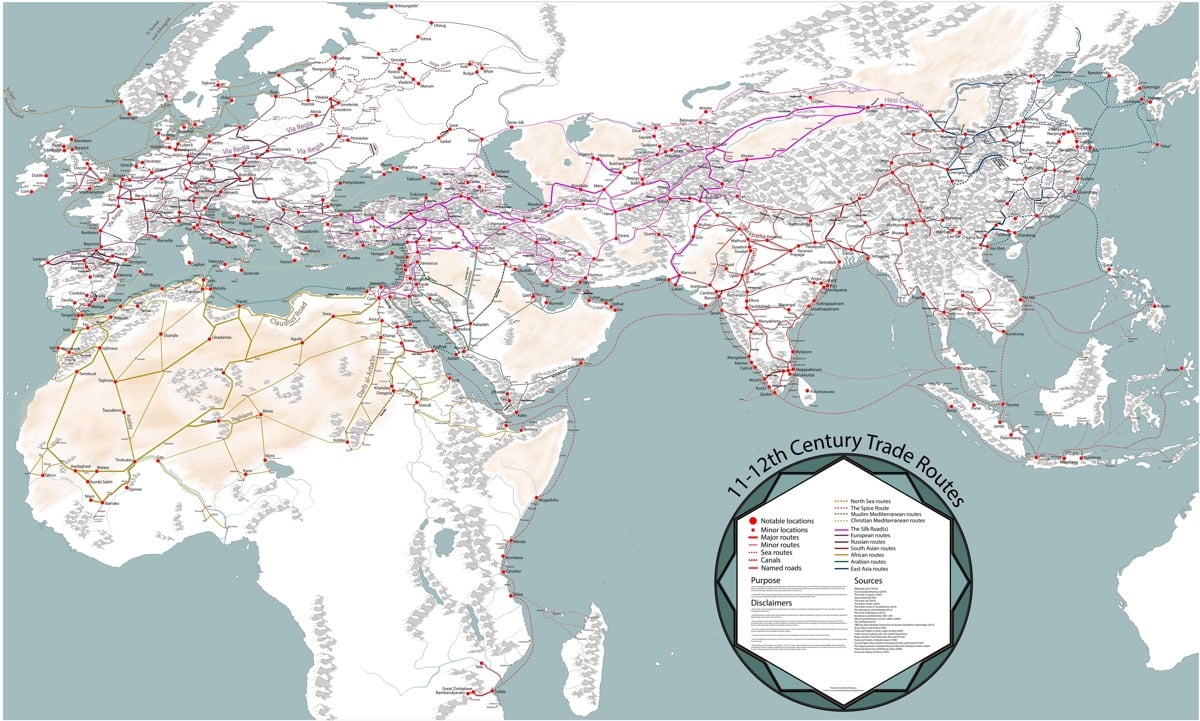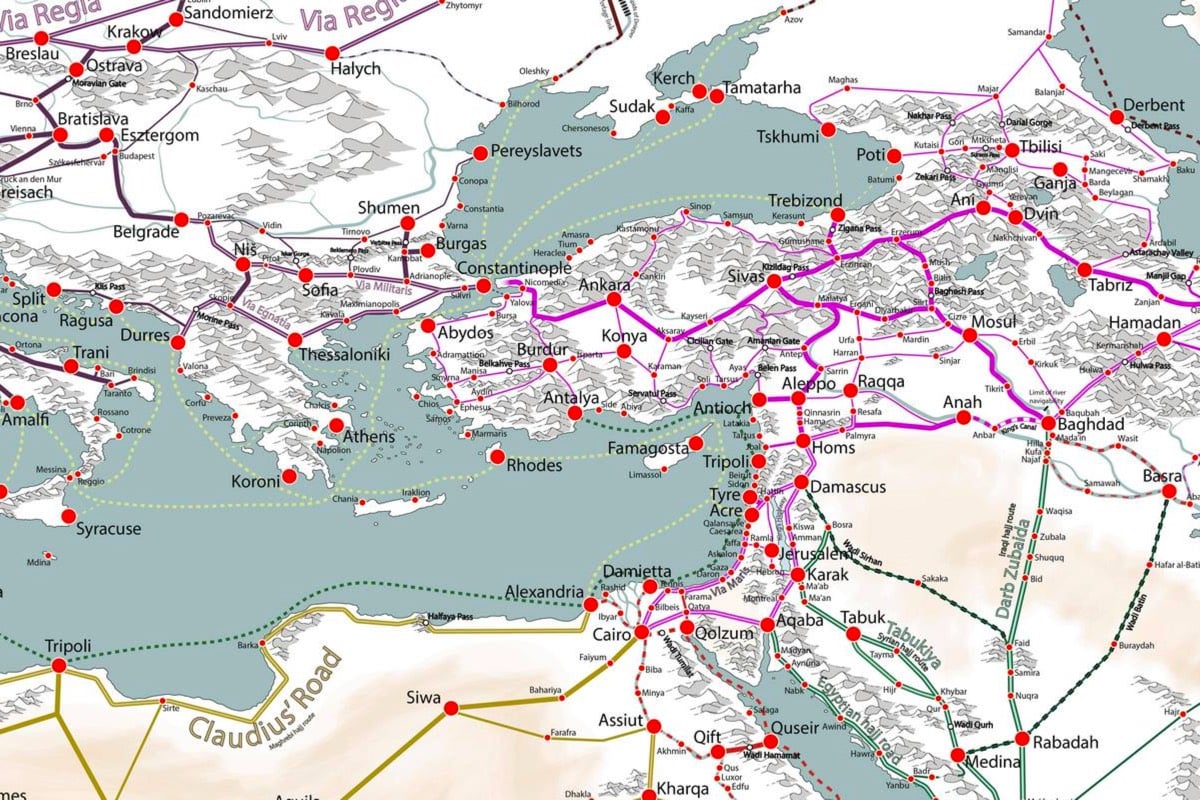A Detailed Map of Medieval Trade Routes in Europe, Asia, and Africa


Grad student Martin Jan Månsson has created this incredibly detailed map of trade route networks in Europe, Asia, and Africa in the 11th and 12th centuries.
Even before modern times the Afro-Eurasian world was already well connected. This map depicts the main trading arteries of the high middle ages, just after the decline of the Vikings and before the rise of the Mongols, the Hansa and well before the Portuguese rounded the Cape of Good Hope.
The map also depicts the general topography, rivers, mountain passes and named routes. All of which contributed to why cities came to be, and still are, up until modern times.
The high middle ages were a time when the stars aligned in terms of commerce for many areas of the world. In central Europe many German and French cities initiated annual trade fairs, some of which are still active today — most notably in Frankfurt. The Europeans have redeveloped a demand for eastern goods as a result of the crusades in Iberia and the Levant. The Italian city states and some north eastern Iberian cities had shipped the crusaders back and forth in the Mediterranean sea, building up huge fleets and setting up networks of trade all around the Mediterranean shores. The Italians frequented ports such as Alexandria, which had separate trading ports for muslim and christian ships.
You can play with a zoomable version here.
The saying is that “all roads lead to Rome” but as this map shows, that assertion belongs to an earlier era. In the 12th century, it was more accurate to say that all roads lead to Constantinople or Cairo or Baghdad or Hanzhong…or perhaps even “all roads lead to everywhere”. It’s not quite globalization, but many of the world’s peoples were well on their way to connecting with everyone else.
P.S. I have heard many good things about Peter Frankopan’s The Silk Roads. It’s been sitting on my (virtual) bedside table for several months now…I think I might make it my next read. Has anyone read it?





Stay Connected